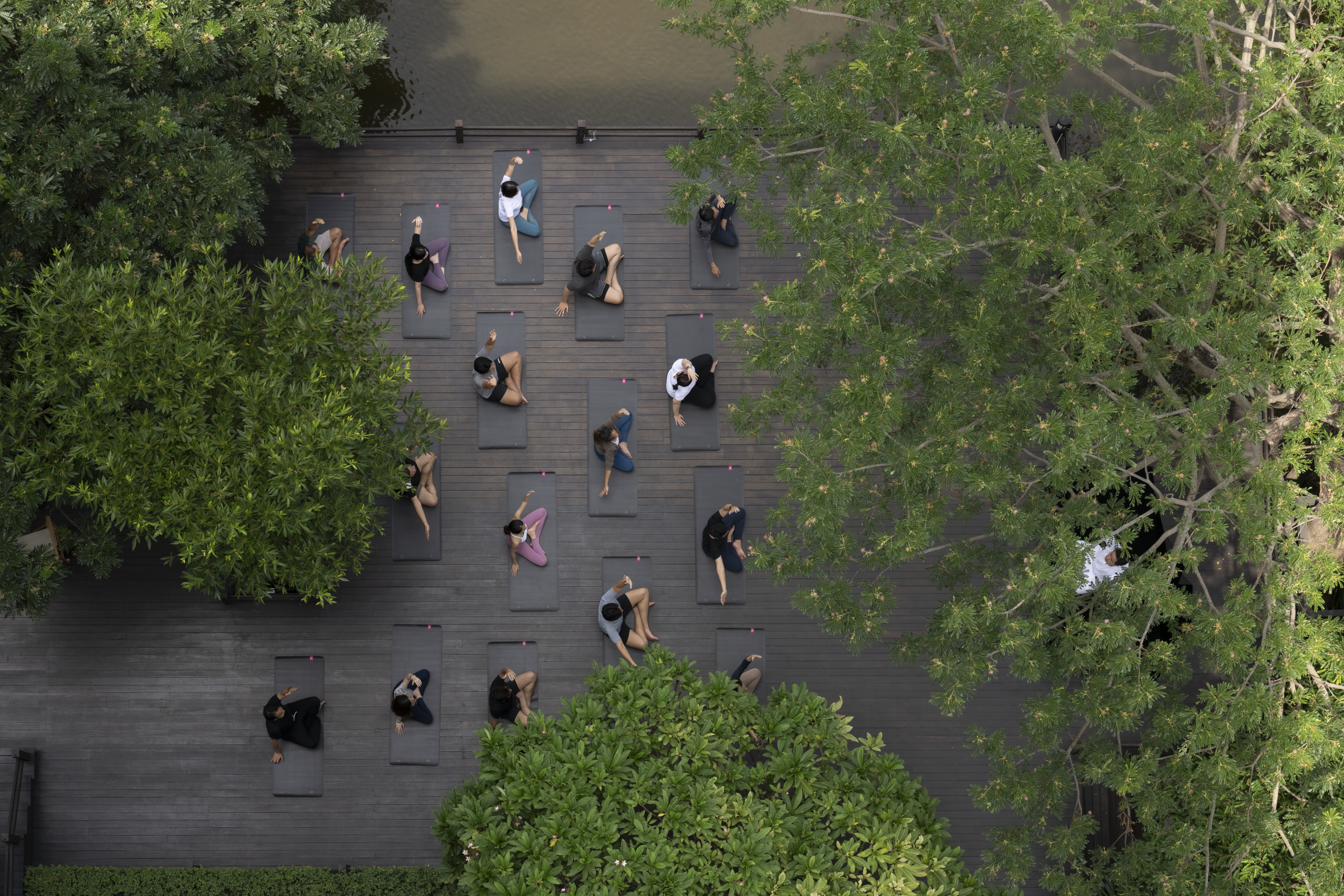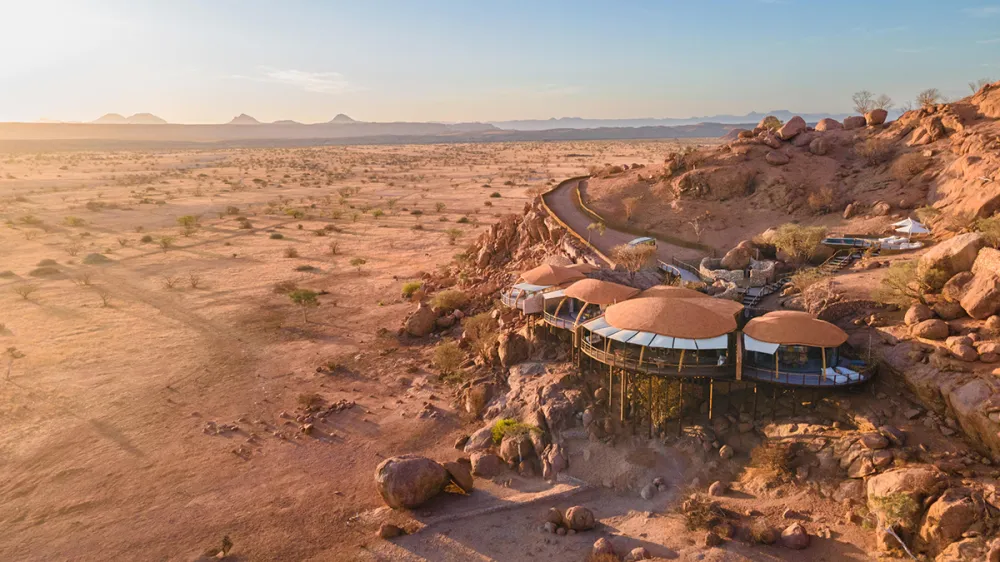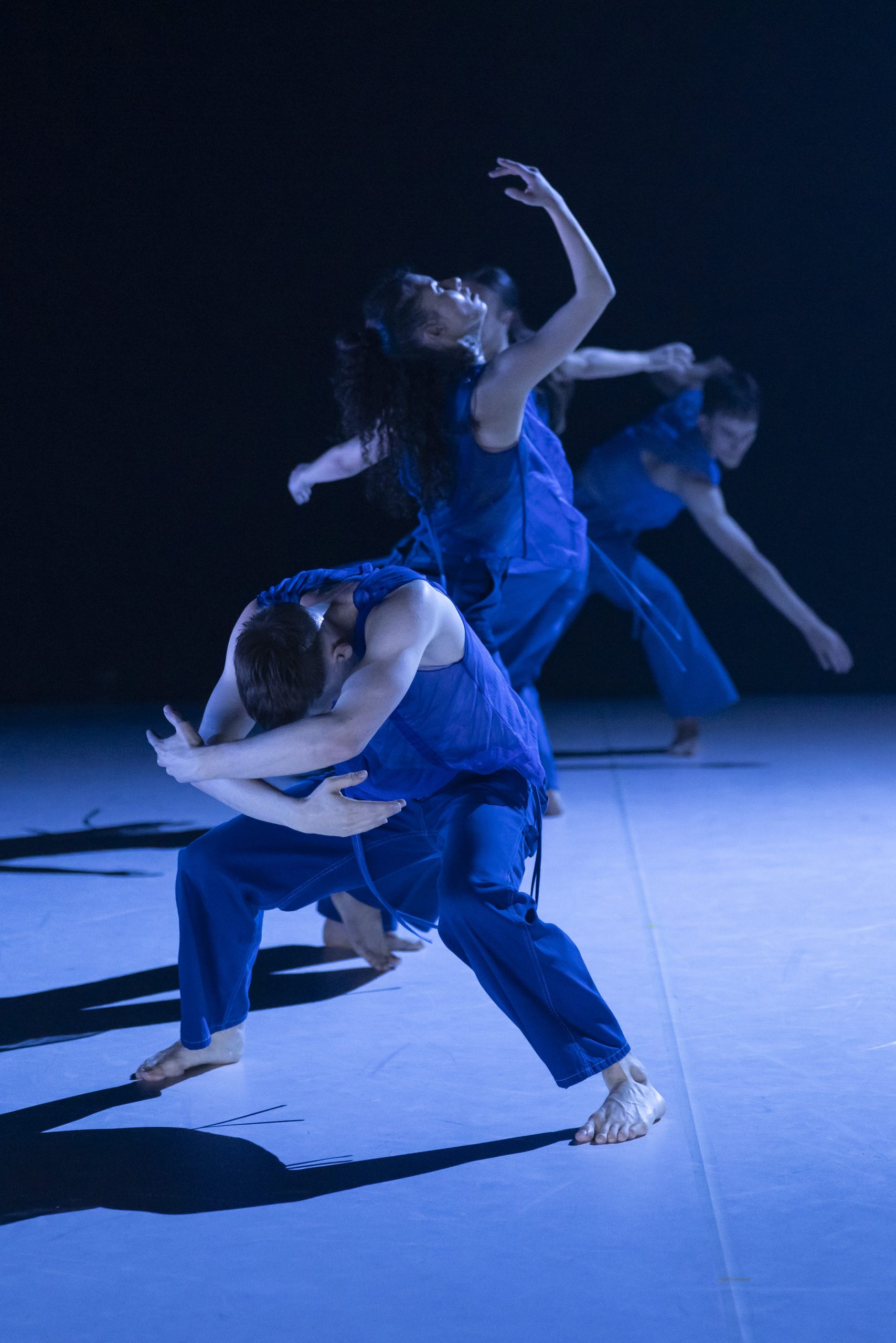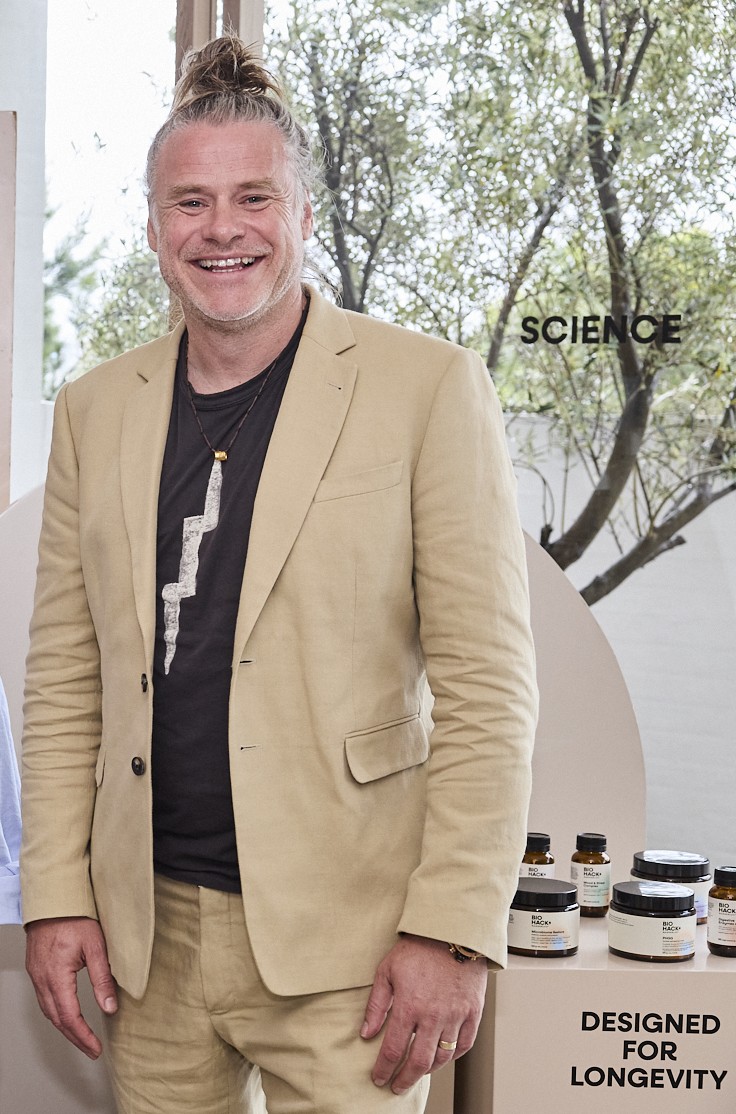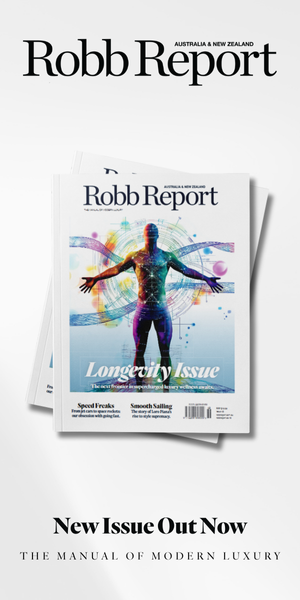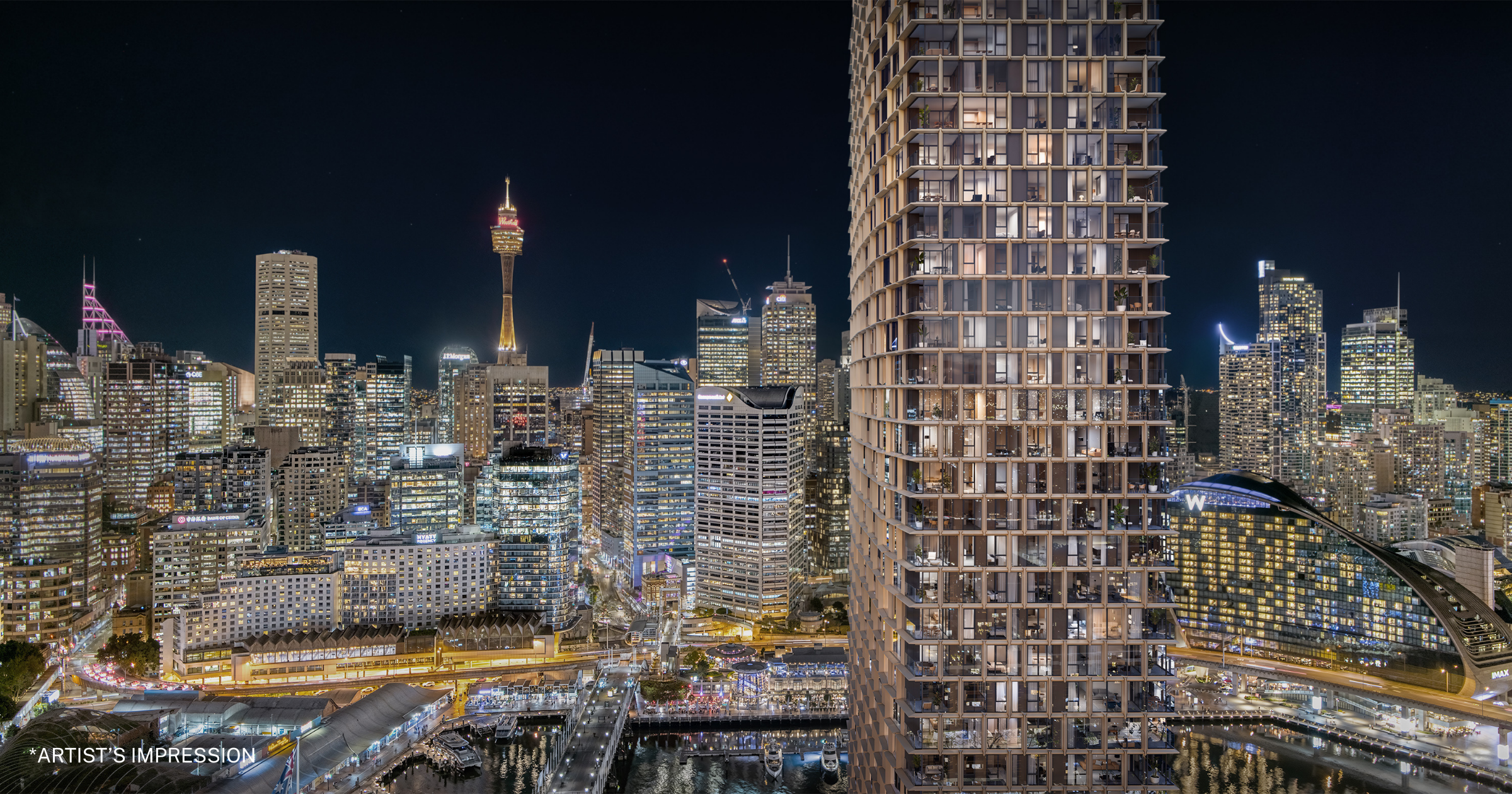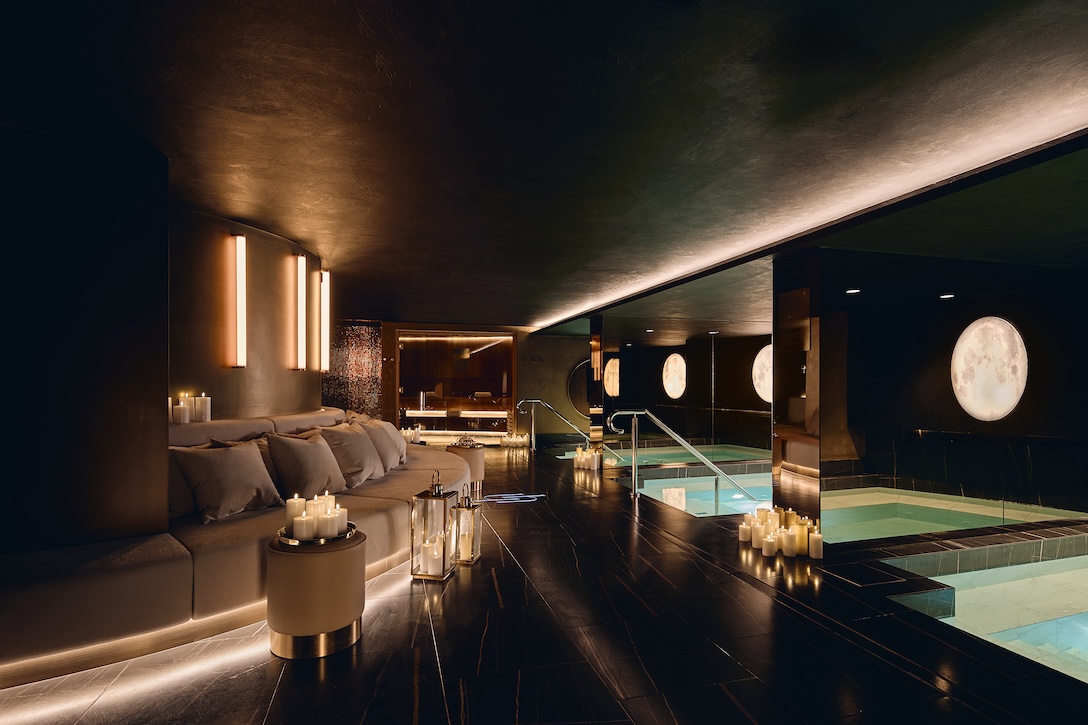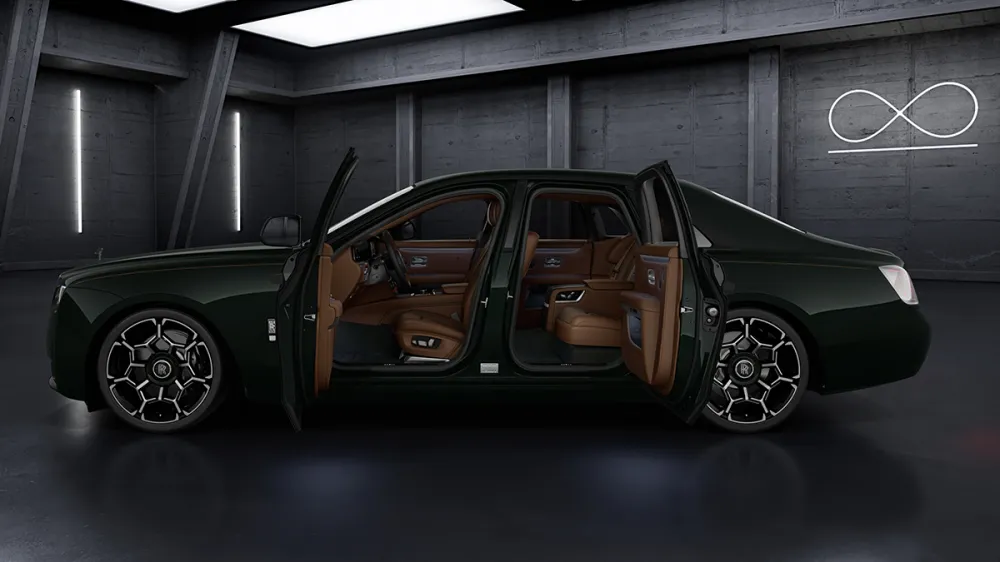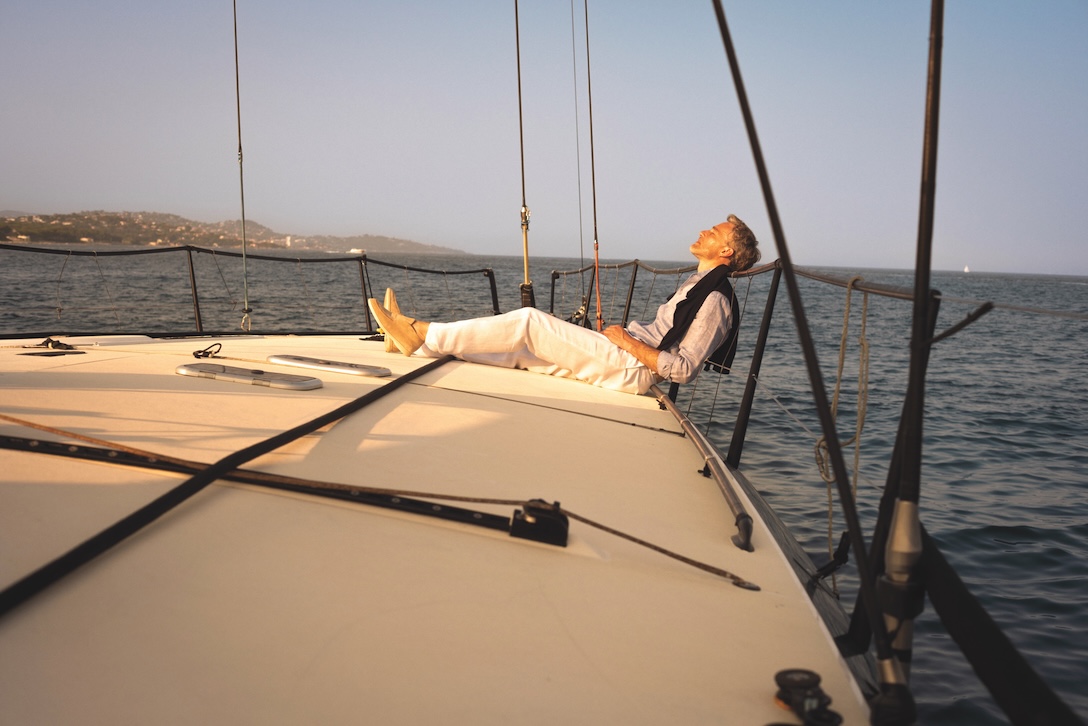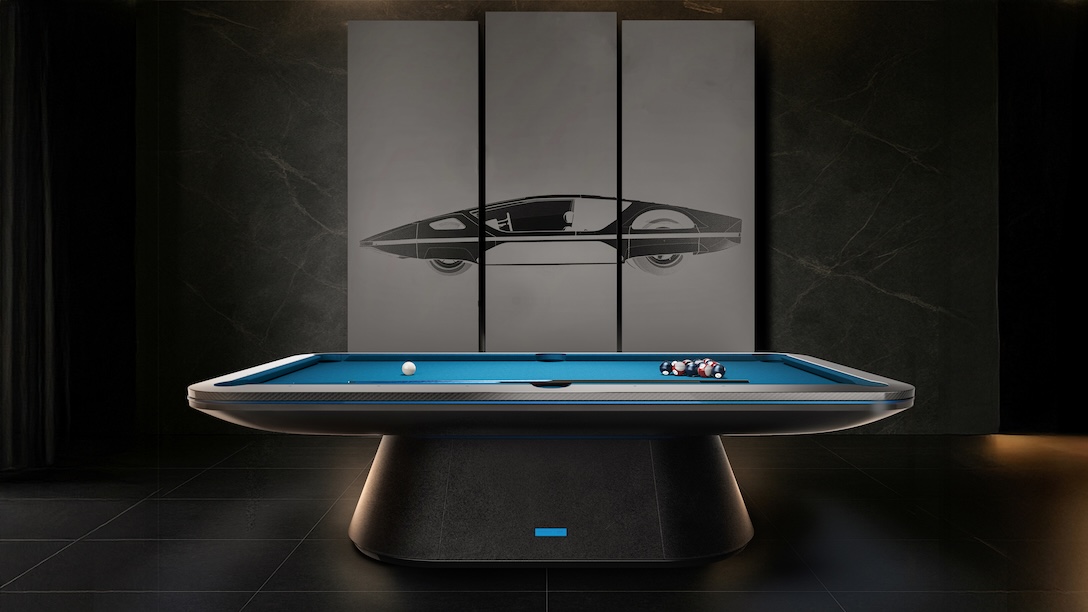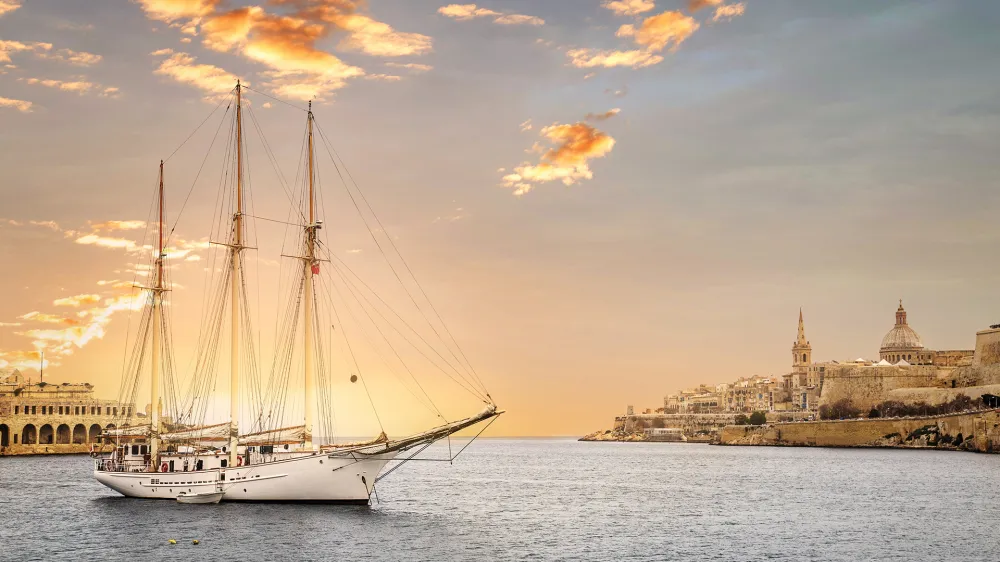
How Malta Became a Modern Traveller’s Luxury Paradise Again
Just south of Italy, the archipelago that rose to wealth and power during the Crusades is modernizing its offerings for visitors and locals alike.
Related articles
They call them Aldo’s fish. The brightly colored, distinctly midcentury patterns on the plates at Villa Bologna Pottery in Malta were designed by Aldo Cremona, who worked there for more than 70 years. Born deaf to a poor family, he had limited schooling and never learned to speak, communicating instead through his vibrant artwork. The facility’s signature scroll design was his handiwork, too, as were a series of water jugs, jauntily daubed with splotches of paint to resemble women. “They were supposed to be saluting admirals, but Aldo didn’t like painting men, so he made them ladies instead,” says the pottery’s owner, Sophie Edwards. Cremona died last year, but there’s still a shelf full of those jugs in the workshop acting as templates for the designs. A small sticker indicates each of their names: Violetta with her bedroom eyes, for instance, or Delft-blue Flora.
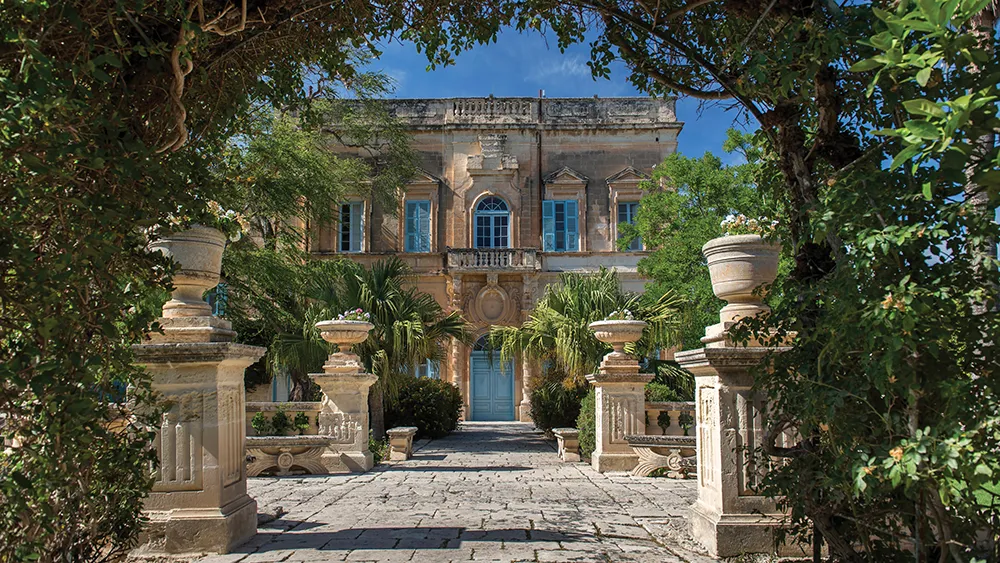
COURTESY OF VILLA BOLOGNA
The workshop itself is almost a century old, founded in 1924 as a philanthropic effort to help employ local women, but it has been reenergized in the three years since Edwards and her husband, Rowley, took over. “Everyone in Malta knows the pottery—the pineapple lamps are popular wedding gifts,” she explains. Now, though, the couple hope to build a bigger audience; last year, they opened their first foreign store, in London’s tony Holland Park, and launched e-commerce for America this spring. Every piece will continue to be handmade.
It’s an unexpected story to those who are at all familiar with Malta. Mention the country and most will think of the military might wielded by the bygone Knights of Malta, and perhaps money, but not making things. Today, though, thanks to an influx of wealthy and design-focused new citizens, the tiny, rocky nation is starting to rebrand itself as a source of, and destination for, serious luxury.
Malta, at just 122 square miles, is composed of three islands: the namesake and largest, plus smaller, rural Gozo, and Comino, a shard wedged between the two. The trio sit squat in the center of the Mediterranean and benefit from naturally deep harbors; such geography and geology made it a squabbled-over strategic possession for centuries, most recently held by the British. (The late Queen Elizabeth lived here as a young wife, and her one-time home will soon open as a museum.)
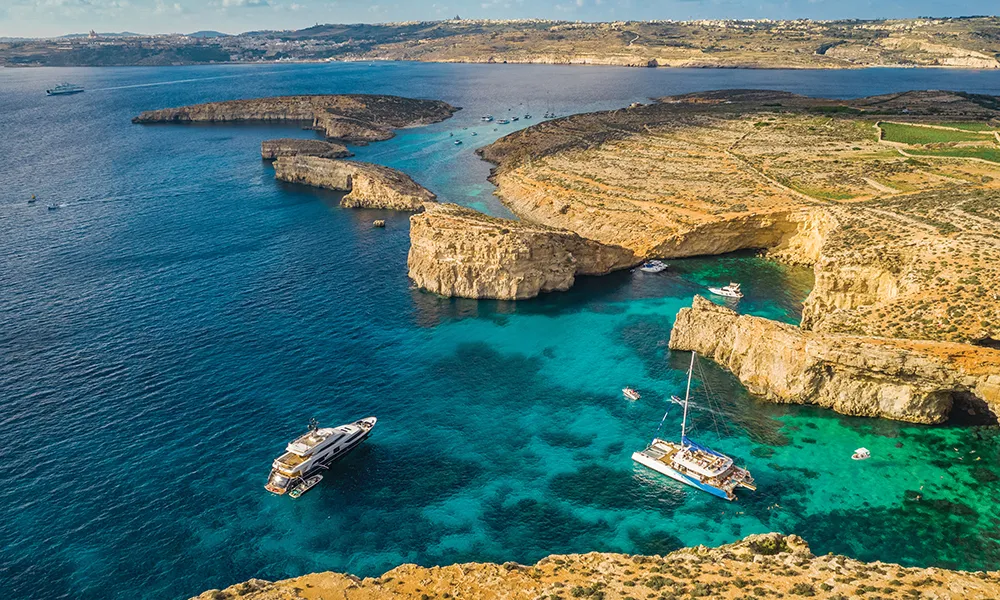
COURTESY OF VILLA BOLOGNA
Malta’s contemporary reputation has focused less on force than on finances, as the country has aimed to act as a Mediterranean answer to the Cayman Islands. Its favorable taxation regime burnished its appeal to wealthy Europeans, who can take up residency here and pay minimal taxes. A citizenship-by-investment program, in which a passport is yours for a million or so euros, has increased the numbers of high-net-worth residents from other regions, too. The policy has not been without controversy since the government introduced it in 2013 under former premier Joseph Muscat—and that administration remains embroiled in the scandal around the murder of investigative journalist Daphne Caruana Galizia six years ago, which precipitated Muscat’s resignation in early 2020 and continues to swirl.
There has been tourism in Malta over the years, but it’s been mostly mass-market. Keen to rebuild after World War II, when the country underwent brutal bombardment by the Axis powers, the Maltese constructed cheap hotels that filled up with sun-seeking Britons and Germans, who provided much-needed economic stimulus in the 1960s and ’70s. But such package holidays are falling from favor, and locals are determined to lure a different caliber of client. “We can’t sustain huge amounts of people like that anymore,” says Maltese interior designer Francis Sultana, who’s based in London and is a cultural ambassador for his homeland, where he has a spectacular house. “Malta has to reinvent itself as a place to live that’s full of arts and culture and with a wonderful sea around it.”
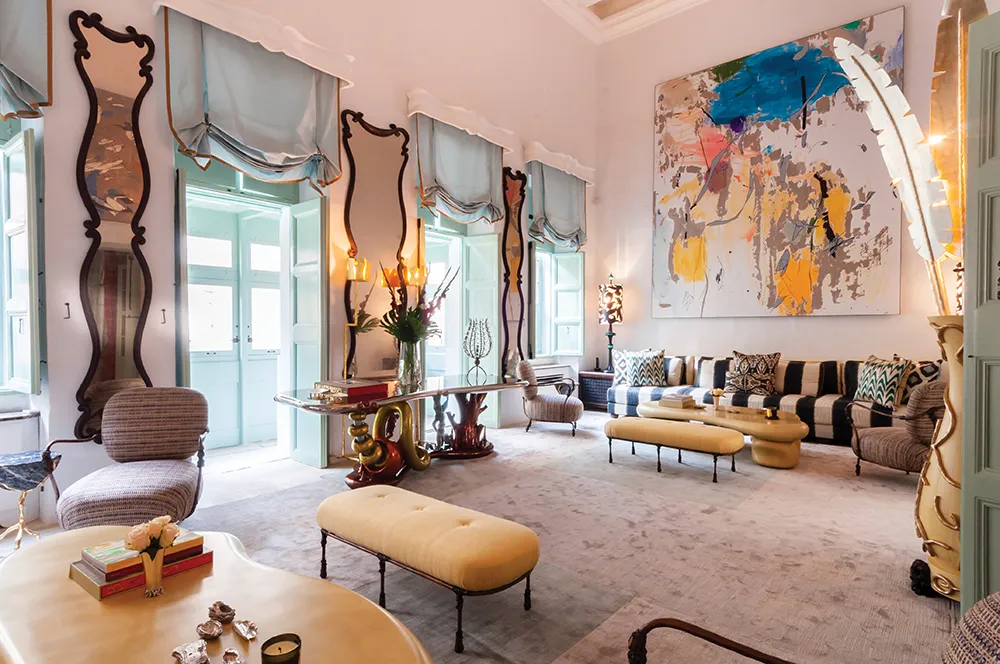
SUPPLIED
To that end, Malta is working to reposition itself via travel specialists, such as the luxury operator Red Savannah, which will introduce the country as a recommended destination this fall. Its interest reflects the rising profile for Malta among elite travelers, which is the hard-won product of the government’s concerted efforts to transform its audience, whether by underwriting new cultural assets, tendering abandoned buildings for renovation, or continuing to expand the citizenship-by-investment scheme. When the first such program filled its quota of 1,800 passports, the government simply launched a second one, slightly tweaked. The firm Latitude Residency and Citizenship helps interested would-be Maltese citizens navigate the red tape.
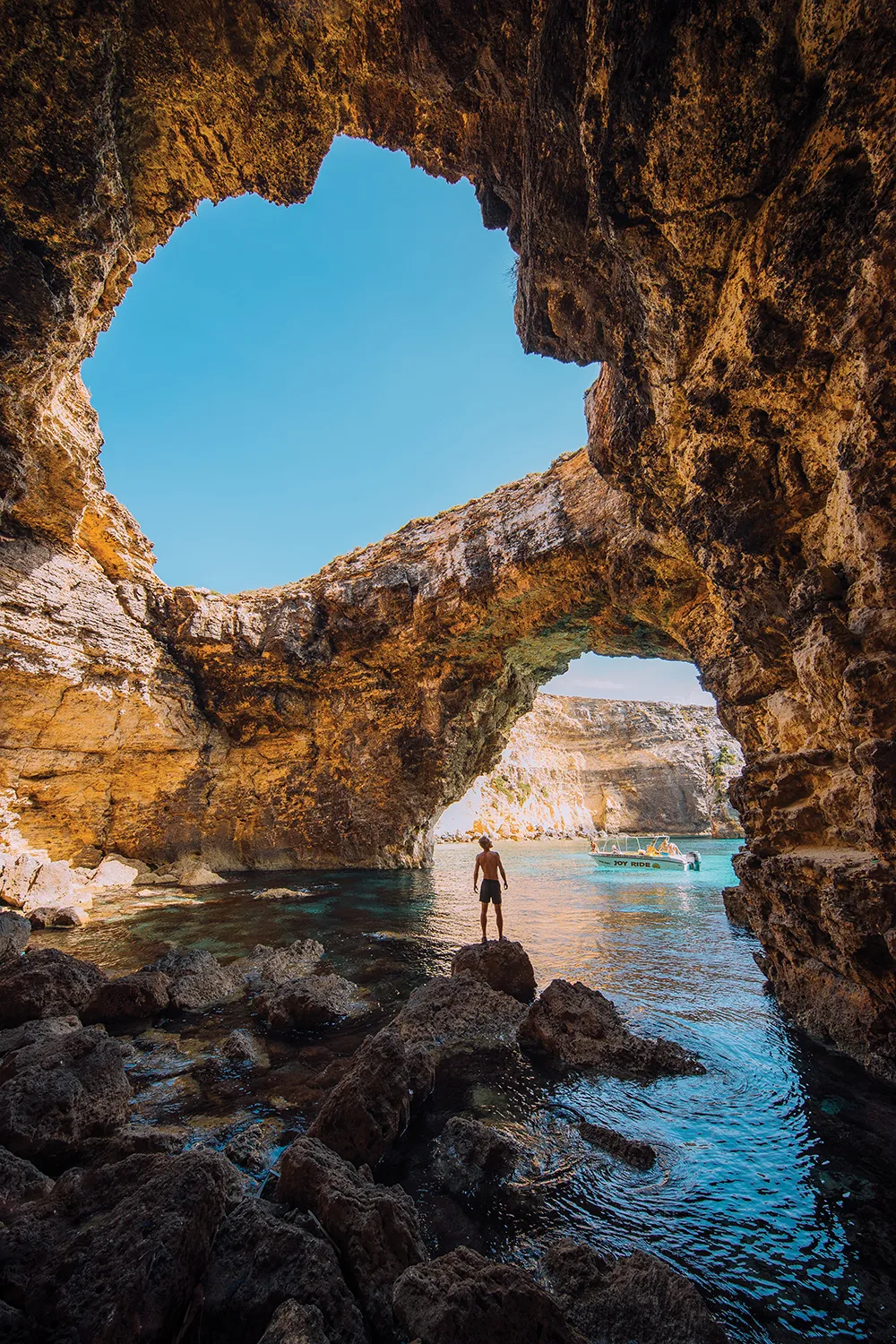
Those new, wealthy tourists and part-time residents are a crucial customer base for Sophie and Rowley Edwards. Sophie grew up partly on the island and had always mulled a return. They were married at Bologna, the country house on whose estate the pottery sits. When she was pregnant with her first child, the now 4-year-old Rocco, the couple visited and found the ceramics workshop in a precarious state, operating with just three staff, including Aldo. “You’d rummage around in the basement and find old molds and bits of pottery,” she recalls. They set about relaunching the company, retaining its retro aesthetic but sharpening its approach to business. They’re now working with interior designers and private clients on custom commissions, all while building a restaurant in the stable block next door to the workshop, an all-day upscale Italian-accented café with its own garden.
Villa Bologna is in the village of Attard, a smallish settlement in the center of the island, but much of the new energy is focused on the country’s capital, postcard-pretty Valletta. Sitting on a rocky outcrop next to the deepest harbor on the northern coast, it was built as a single project in the 1570s, which conferred a pleasing uniformity to its architecture. The aesthetic is the same Ottoman-influenced style seen throughout Venice. Valletta was cannily master-planned in a grid layout, allowing sea breezes to pass through downtown as natural air-conditioning; even today, the shadier streets remain surprisingly cool in midsummer.
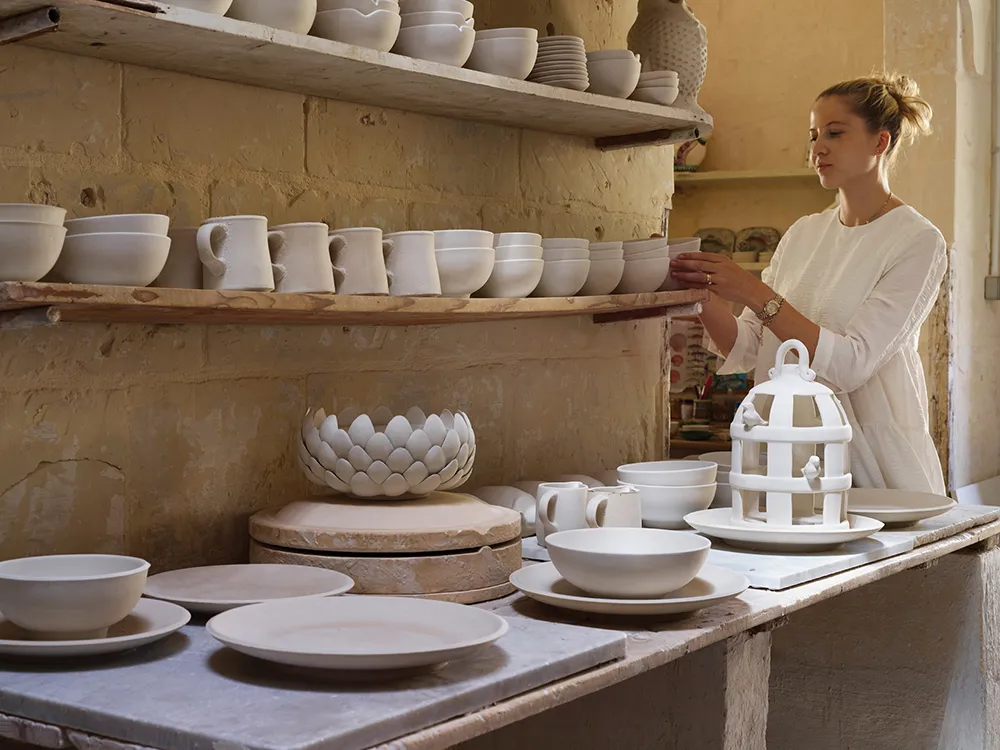
COURTESY OF VILLA BOLOGNA
The old structures here are being artfully redeployed. Take Renzo Piano’s 2015 parliament building, a rippled cube rendered in the same honeyed limestone used to erect its 16th-century neighbors. His initial plan to demolish the ruined former opera house next door proved controversial, so he instead repurposed the bomb-scarred site as an outdoor theater that serves as both a memorial and an amenity. Then there’s the one-time abattoir that reopened two years ago as the Valletta Design Cluster, a WeWork-meets-workshop complex aimed at creative startups whose primary-color-painted doors and windows have a whiff of De Stijl. Local architect David Felice and his firm, AP Valletta, are working on a major new home for the various artworks and tapestries from the city’s cathedral: a glass box grafted onto a series of old houses, earmarked for completion in 2024. And just outside the city walls is arguably the most ambitious creative project in the country: the Malta International Contemporary Art Space, or MICAS, which is set to open its 16,000 square feet of galleries next year.
It’s already a thrilling site to walk around. The iron-beamed skeleton for MICAS’s huge glass-walled rooms sits bolted to the remnants of the Old Ospizio, a 17th-century fortress that stored gunpowder safely away from Valletta proper. The museum’s modernist design, penned by the Florentine architecture firm IPO Studio, forms a stark contrast to those yellowish, weathered walls. Excavations unearthed ancient ruins—the Romans also saw the strategic value of these islands—and so forced the architects to rejigger their vision; another room now incorporates the big bricks into one of its walls.
On a sunny but brisk March day, the redoubtable chair of MICAS, Phyllis Muscat, picks her way through the site with curator and board member Georgina Portelli, proudly pointing to the rooftop sculpture garden, which will be home to temporary commissions and permanent pieces by the likes of Michele Oka Doner and Cristina Iglesias. They hope that MICAS will act as Malta’s answer to London’s Serpentine Galleries, a small but noteworthy space ideal for artistic takeovers, or the seaside Istanbul Modern. It’s already attracting attention: Sculptor Conrad Shawcross has committed to a site-specific installation this October, before the venue is even complete.
Similarly, Sultana, the interior designer, stresses that Malta’s move upscale is actually a return to its roots. Think back to the Knights of Malta, he suggests, the Christian order that combined chivalry, conquest, and care for the needy. Its aristocratic and international members, who helped take Jerusalem during the Crusades and ruled over parts of Greece, Italy, and, briefly, the Caribbean, in addition to Malta, left the island flush with their fortunes. “The Knights were very, very into luxury, so much gold leaf and great paintings,” Sultana says. “So people are not afraid of maximalism here.” He refers to the local aesthetic as “baroque and roll”—as much the Clash as Caravaggio. (Indeed, that serial rebel took refuge here in 1607, fleeing murder charges in Rome, and his largest work sits in the oratory of St. John’s Co-Cathedral.)
“I think of Malta as Marrakech in the Med,” says John Cooney, comparing these islands to the city where Yves Saint Laurent and his entourage formed a chic outpost of creative expats. Cooney is a Swiss Italian entrepreneur who moved to the island with his husband, Kevin Schwasinger, three years ago. Among other ventures, Cooney’s company Forbidden City designed and operated boutiques in Aman’s hotels for several years. He and Schwasinger now live in a converted palazzo originally built for one of the Knights of Malta but are developing a new five-bedroom hotel in a 17th-century complex in what is known as the Three Cities, a trio of towns that share Valletta’s harbor.
The hotel, called Cité Privée Maison Malte, is the first of an intended chain and will open in 18 months’ time alongside 20 residences located on nearby streets, also in old buildings that the couple are painstakingly restoring. Buyers can use the services of the hotel, and they can also deed the properties into the hotel’s rental pool for guests to book. Cooney says the appeal of developing beyond Valletta’s walls is that this part of the island hasn’t yet seen intense, mass tourism, despite being just a short boat ride away—you can take one of the luzzu, or Maltese gondolas, and glide across the harbor in less than 10 minutes. “This part is like living in an old Maltese village, before there were cars—for me that’s what is really enchanting,” he says. “You might have an old lady down the street screaming at the top of her lungs at her daughter, but other than that, there’s no noise.”
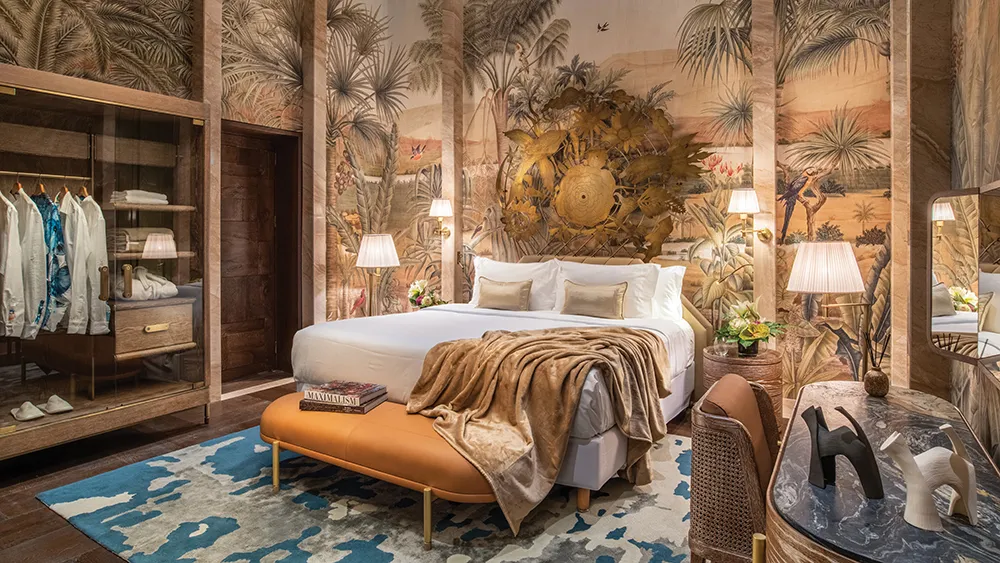
COURTESY OF INIALA HOTEL
Most exciting, though, is the raft of new hotels that are set to open, such as Casa Bonavita, a project by Sophie Edwards’s parents, Christopher and Suzanne Sharp, in a 1760 Baroque mansion they acquired about 12 years ago. The couple are the founders of interiors firm the Rug Company, and Suzanne is Maltese. “We’ve always had the problem that people say to us, ‘Where should I stay in Malta?’ And it’s really difficult, so we started thinking about the house we bought—it’s so large, it was a bit of a folly,” Christopher says of the site, which they’ve since painstakingly repurposed into a 17-room hotel set to bow next spring.
The government is supporting such efforts. It has put a grand former office in central Valletta on the market, expressly for conversion into a high-end hotel; the winning bid will be announced this summer. One of those chasing the deal is British businessman Mark Weingard, who moved to Malta from Spain a decade ago for the financial upsides but quickly embraced the island and its culture. He opened the first truly upscale hotel here, Iniala, which straddles several historic townhomes overlooking that harbor. “When you walk around Valletta, you can get confused,” Weingard says. “It’s this fusion of East and West, a mix of Jerusalem and Venice.” Another mark of his confidence in the destination’s uptick: He has just installed L’Enclume’s three-Michelin-starred chef, Simon Rogan, at the Michelin-starred Ion Harbour restaurant, only Rogan’s second site outside England.
But the biggest project is far from Valletta—indeed, it’s on another island entirely: Comino. Barely 1.4 square miles in size, Comino is mostly a protected habitat now, having once been farmland. Just one resident remains, a man in his 70s who lives self-sufficiently on a small plot. There is modern construction on Comino, though, and it’s yet another legacy of that rush to mass tourism in the wake of World War II: two connected sites, on the island’s northern coast, one a hotel complex and the other a series of hotel-operated villas. They’d slumped from their hey-day, booked mostly to package vacationers, and were shuttered four years ago. Malta’s government hoped to hand the sites over to a new developer who would reimagine them entirely for luxury tourism—and that entity was Malta-based Hili Ventures.
Now surrounded by metal fencing, the abandoned buildings have an eerie quality, shabby but solidly constructed with little consideration for the surrounding countryside. The landscape is typical of Malta: low-lying brushland, free of trees, with clusters of shrubs huddled together against the winds. Hili hopes that a recently announced deal with luxury hotelier Six Senses to operate the property will single-handedly draw luxury travelers from around the world to Malta. Only time will tell.”
The Lowdown
GETTING THERE No airlines offer long-haul flights to Valletta, so most North American visitors arrive via a European hub. For charters within Europe, the Maltese private-jet facility is located at the main airport but has its own stand-alone terminal; try Hans Jet for reasonable options. La Valette Club can handle VIP customs and arrival.
GETTING AROUND The archipelago’s roads can be chaotic. It’s smartest to hire a driver to scoot around the islands without white knuckles; Dacoby has the best chauffeurs.
ACCOMMODATIONS The top choice is Valletta’s Iniala Harbour House, with 23 rooms and suites. There are five penthouse-suite-style options—the best, dubbed the Lucija, boasts a private plunge pool. The four-bedroom Hideaway, an annexed property a few doors down from the main hotel, is available for buyouts, too. From about $382 per night.
RESTAURANTS In Valletta, try the Harbour Club for sundowners. Gracy’s, owned and operated by British businessman Greg Nasmyth and his wife, Samantha Rowe-Beddoe, is a members’ club whose brasserie is open to the public: Come on a Sunday for a buzzy afternoon scene or book the plush private karaoke room downstairs. Noni is one of the city’s six restaurants with Michelin stars, run by local chef Jonathan Brincat and his sister and maître d’, Ritienne. The food is playful and unstuffy: Order the superb, deconstructed prawn cocktail.
Outside the city, try Carmen’s, a waterfront bar and restaurant on Għar Lapsi on the south coast—casual but disarmingly delicious, especially on a warm spring day. Il Corsaro, in the historic town of Żurrieq, is owned and run by an old Italian; think freshly made pasta, menus on chalkboards, and a room full of hungry locals.
ACTIVITIES Malta doesn’t have many appealing sandy beaches; instead, expect craggy edges at the waters. Head down to the southern coast for the quietest perches: The swimming holes at Wied iz-Zurrieq are reachable from the rocks, as is the Blue Grotto arch there; the sea off Ghar Lapsi is easily swimmable, too. The walks in and around Dingli Cliffs are spectacular in the late afternoon. For diving, the oldest local club is Atlam SAC; standout sites include the Bristol Beaufighter World War II wreck at 124 feet or the SS Polynesian, a French liner sunk during World War I that lies at 223 feet.
OPERATORS Fischer Travel and Red Savannah, both Robb Report Travel Masters, have expertise in the islands. Note that weather is mostly pleasant year-round, but try to avoid January and February, which can be rainy and cold; December is often surprisingly balmy, while midsummer will be brutally hot.
Subscribe to the Newsletter
Recommended for you
In Search of the Promised Land
In a world driven by self-optimisation tech, what is left for a luxury health retreat to offer? We head to Thailand’s RXV Wellness Village, seeking some magic among the data.
October 23, 2025
This New Safari in Namibia Takes You on Dune Drives Like an IRL Mad Max
Ker & Downey Africa’s fully customisable itinerary lets you channel your inner Max or Furiosa with a slew of activities inspired by the film franchise.
September 11, 2025
You may also like.
You may also like.
Radek Sali’s Wellspring of Youth
The wellness entrepreneur on why longevity isn’t a luxury—yet—and how the science of living well became Australia’s next great export.
Australian wellness pioneer Radek Sali is bringing his bold vision for longevity and human performance to the Gold Coast this weekend with Wanderlust Wellspring—a two-day summit running 25-26 October 2025 at the RACV Royal Pines Resort in Benowa. Sali, former CEO of Swisse and now co-founder of the event and investment firm Light Warrior, has long been at the intersection of wellness, business and conscious purpose.
Wellspring promises a packed agenda of global thought leaders in biohacking and longevity, including Sydney-born Harvard researcher David Sinclair, resilience pioneer Wim Hof, performance innovator Dave Asprey and muscle-health expert Gabrielle Lyon. From immersive workshops to diagnostics, tech showcases, and movement classes, Sali aims to make longevity less a niche pursuit for the elite and more an accessible cultural shift for all. Robb Report ANZ recently interviewed him for our Longevity feature. Here is an edited version of the conversation.
You’ve helped bring Wellspring to life at a moment when longevity seems to be dominating the cultural conversation. What drew you personally to this space?
I’ve always been passionate about wellness, and the language and refinement around how we achieve it are improving every day. Twenty years ago, when I was CEO of Swisse, a conference like this wouldn’t have had traction. Today, people’s interest in health and their thirst for knowledge continue to expand. What excites me is that wellness has moved into the realm of entertainment—people want to feel better, and that’s something I’ve always been happy to deliver.
There are wellness retreats, biohacking clinics, medical conferences everywhere. What makes Wellspring different?
Accessibility. A wellness retreat can be exclusive, but Wellspring democratises the experience. Tickets start at just $79, with options up to $1,800 for a platinum weekend pass. That means anyone can learn from the latest thought leaders. Too often in this space, barriers are put up that limit who can benefit from the science of biohacking. We want Wellspring to be for everyone.
You’re not just an organiser, but also an investor and participant in this field. How do you reconcile passion with commercial opportunity?
Any investment I make has to have purpose. Helping people optimise their health has driven me for two decades. It’s satisfying not just as an investor but as an operator—it builds wonderful culture within organisations and makes a real difference to people’s lives. That’s the natural fit for me, and something I want to keep refining.
What signals do you look for in longevity ventures to separate lasting impact from passing fads?
A lot of what we’re seeing now are actually old ideas resurfacing, supported by deeper scientific research. My father was one of the first in conventional medicine to talk about diet causing disease and meditation supporting mental health back in the 1970s. He was dismissed at first, but decades later, his work was validated. That experience taught me to look for evidence-based practices that endure. Today, we’re at a point where great scientists and doctors can headline events like Wellspring—that’s a huge cultural shift.
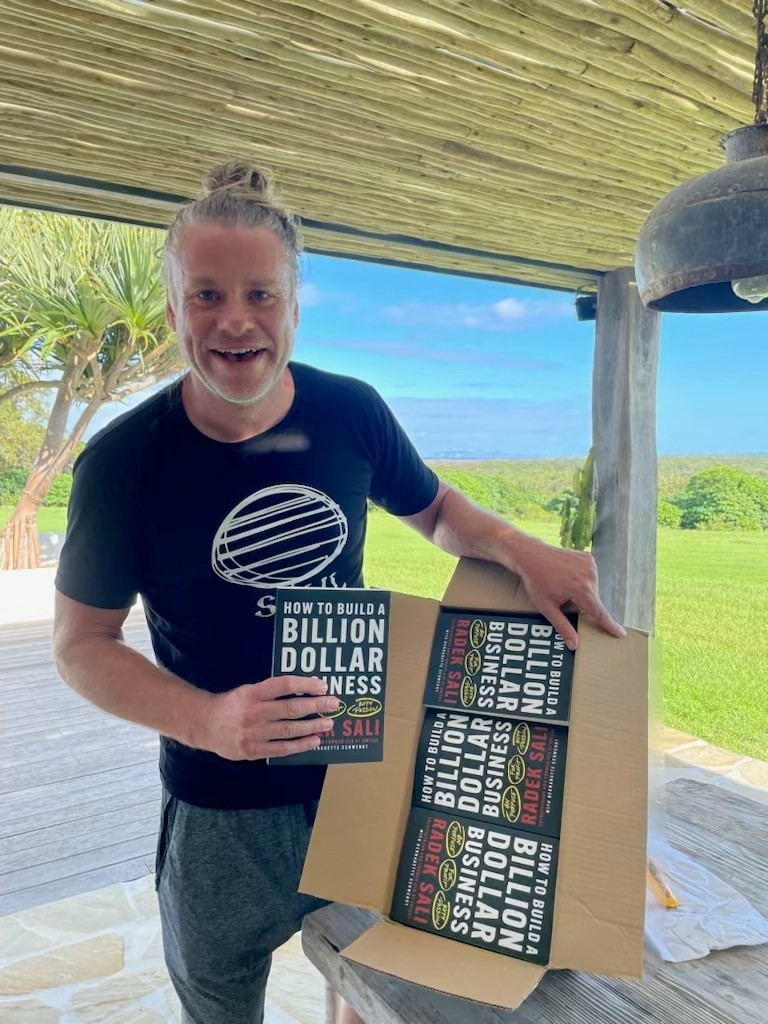
Longevity now carries a certain cultural cachet—its own insider language and status markers. How important is that to moving the field forward?
Health is our most precious asset, and people have always boasted about their routines—whether it’s going to the gym, doing a detox, or training for a marathon. What’s different now is that longevity practices are gaining mainstream recognition. I see it as something to be proud of, and I want to democratise access so everyone can ride the biohacking wave.
But some argue that for the ultra-wealthy, peak health has become a kind of luxury asset—like a private jet or a competitive edge.
That’s short-sighted. Yes, there are extremes, but most biohacking methods are accessible and inexpensive. Look at the blue zones—their lifestyle practices aren’t costly, yet they lead to long, healthy lives. That’s essential knowledge we should be sharing widely, and Wellspring is designed to do that in an engaging way.
Community is often cited as a key factor in healthspan. How does Wellspring foster that?
Community is at the heart of it. Just as Okinawa thrives on social connection, we want Wellspring to be a regular gathering place where people uplift each other. Ideally, it would become as busy as a Live Nation schedule—but for health and wellness.
Do you worry longevity could deepen class divides?
Class divides exist, and health isn’t immune. But in Australia, we’re fortunate—democracy and a strong equalisation process help maintain quality of life for most. Proactive healthcare, like supplementation and lifestyle changes, isn’t expensive. In fact, it’s cheaper than a daily coffee. That’s why we’re one of the top five longest-living nations. The opportunity is to keep improving by making proactive health accessible to everyone.
Some longevity ventures are described as “hedge-fund moonshots.” Others, like Wellspring, seem grounded in time-tested approaches. Where do you stand?
There’s value in both, but I’m more interested in sensible, sustainable practices. Things like exercise, meditation, and community-driven activities are proven to extend life and improve wellbeing. Technology can support this, but we can’t lose sight of the human elements—connection, balance, and purpose.
Finally, what role can Australia—and Wellspring—play in shaping the global longevity conversation?
The fact that we can put on an event like Wellspring, attract world-leading talent, and already have commitments for future years says a lot. Australia is far away, but that hasn’t stopped great scientists and thinkers from coming. We’ll be here every year, contributing to the global conversation and, hopefully, helping more people extend their healthspan.
You may also like.
‘Continuum’ Opens to Rave Applause at Sydney Dance Company
Rafael Bonachela’s latest curatorial triumph premiered last night at the Roslyn Packer Theatre, dazzling audiences with its emotional range and fearless physicality.
Sydney Dance Company opened its latest season with Continuum, a triple bill that reminds audiences why the ensemble remains Australia’s most compelling cultural export. Receiving a standing ovation at its premiere last night at the Roslyn Packer Theatre, the program unfolds as an elegant meditation on movement and metamorphosis—three distinct choreographic visions held together by Rafael Bonachela’s curatorial precision and instinct for contrast.
Stephen Page’s Unungkati Yantatja – one with the other breathes land, sea, and sky into motion; Tra Mi Dinh’s Somewhere between ten and fourteen lingers in the tender light between day and night; and Bonachela’s own world-premiere Spell delivers the evening’s visceral heartbeat. Together they trace the continuum of life itself—fluid, volatile, and impossible to pin down. Running through 1 November, the production affirms Bonachela’s vision of dance as “an ever-evolving conversation between artists, audiences, and the world around them.” Robb Report ANZ recently caught up with Bonachela.
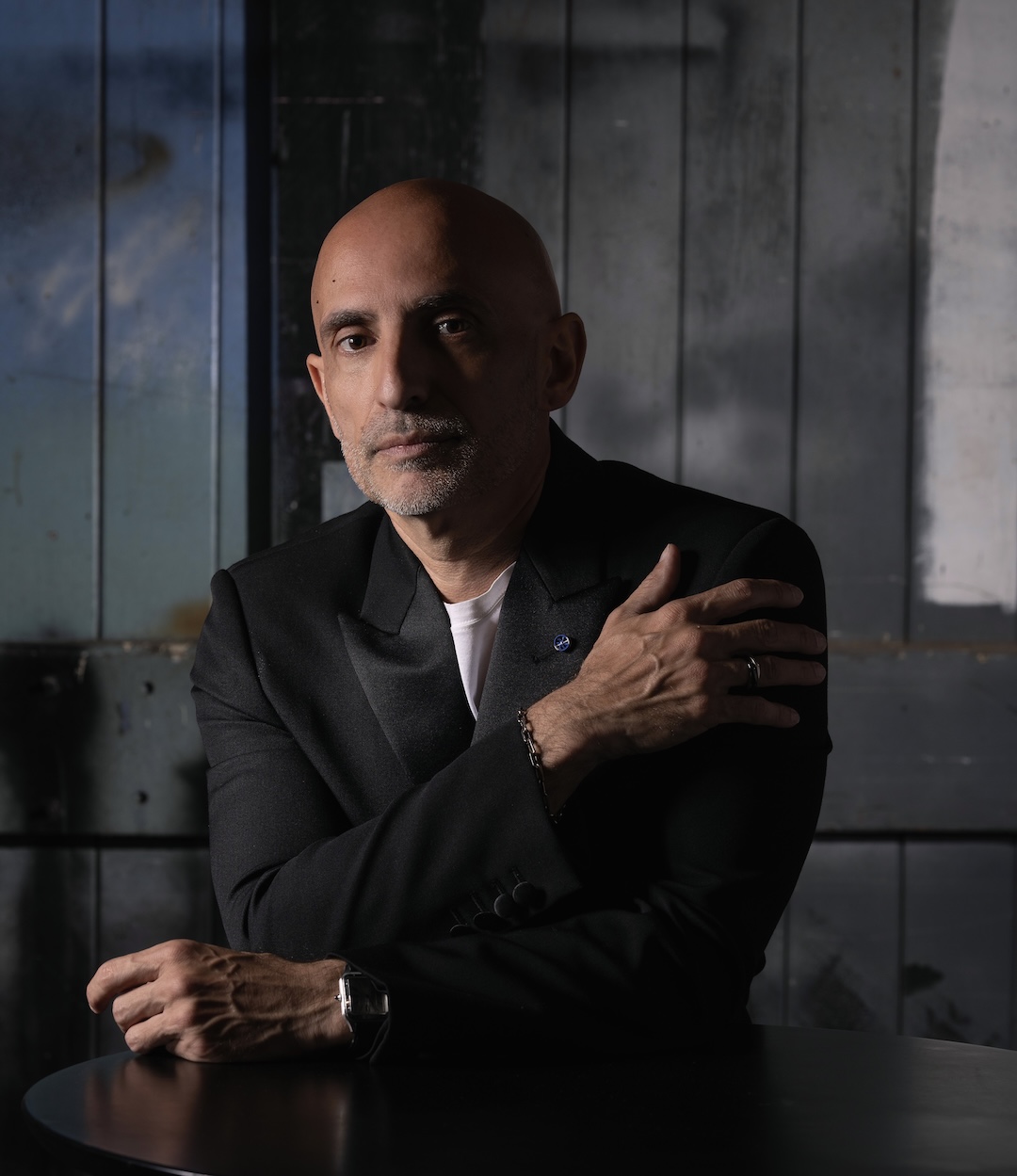
Continuum is described as “a bold exploration of the ever-shifting cadence that binds us to the world.” How did this idea of constant transformation influence your choreographic choices in Continuum?
I’ve curated this evening as an invitation for audiences to experience dance as an ever-evolving conversation—between past and present, between the individual and the collective, and between diverse artistic voices. My intention with this program is to spark connection, curiosity, and reflection, offering works that challenge, move, and inspire while revealing the transformative power of the body in motion.
Each choreographer brings a distinct perspective, yet all share a commitment to exploring the body in motion as a vessel for transformation. Through contrasting aesthetics, cultural resonances, and shifts in time, these works reveal how dance exists on a continuum—where moments build upon one another, find new meanings in fresh contexts, and affirm the enduring power of the human form to express what words cannot.
You’ve created the world premiere Spell within Continuum, which explores “the limits of emotional and physical expression.” What did you aim to conjure emotionally and physically through Spell, and how does it dialogue with the other works in the triple bill?
The title Spell itself suggests a duality—it can be something magical, but also something we fall under without even realising. Emotionally, I want to evoke an atmosphere that is at once intimate and volatile, where vulnerability and power exist side by side. There’s a ritualistic quality to the work, as if the dancers are caught inside a force they cannot quite escape—and it’s that tension which drives the movement and fuels the piece.
Within Continuum, Spell emerges as an intense, visceral heart—both contrasting with and speaking to the other works. While it shares the evening’s theme of transformation, it explores it through a lens of emotional ignition and fearless physicality.
In crafting Continuum, how did you balance moments of intimacy and expansiveness—especially when layering live elements like music and immersive lighting—to evoke that ebb and flow of life’s narratives?
In Continuum, each choreographer works with complete artistic freedom, without any direction from me. That independence brings out authentic contrasts and unexpected connections between the works. It’s this variety that invites audiences to engage on their own terms, discovering personal meanings and emotional threads that are unique to each viewer.
This triple bill seems to offer a journey through time and place—from twilight’s fleeting beauty to elemental breath. How do you want audiences to experience—and perhaps rethink—the relationship between movement, nature, and storytelling?
I always want audiences to come with an open mind and allow the experience to be unprescribed free to discover their own meanings and narratives. Dance has the unique power to be felt as much as it is seen, to resonate physically and emotionally in ways words can’t. I hope audiences leave with a renewed sense of how deeply movement is connected to the natural world, and how it can tell stories without language. Like nature, this evening is always in motion—emerging, transforming, and fading—so that each work becomes a landscape the audience can journey through, sensing their own place in the continuum of life
Looking ahead, does Continuum carve out a new direction or personal milestone for your artistic trajectory? What might this signal for your future choreographic explorations?
Continuum feels like both a culmination and a starting point. It gathers threads from my past work, my fascination with transformation, my love of collaboration, my search for emotional truth and weaves them into something that opens new doors.
Creating and curating this triple bill has changed how I see works interacting—how contrasting voices can strengthen shared themes. It’s inspired me to explore even more fluid boundaries between ideas, styles, and disciplines.
If it signals anything for the future, it’s that I’m interested in going further into that space where dance is not just movement, but an ongoing conversation—between artists, between forms, and between audiences and the world around them.
Continuum runs through November 1 at the Roslyn Packer Theatre.
You may also like.
By Mark Ellwood
04/07/2025
Inside the $30 Billion Obsession Among the Ultra-Wealthy : A Race to Live Longer
The pursuit of an extended life has become a new asset class for those who already own the jets, the vineyards, and the art collections. The only precious resource left to conquer, it seems, is time.
If you want to know what the latest obsession is these days among the ultra-wealthy, listen in at dinner.
Once it was crypto, then came AI and psychedelics, now it’s longevity all the time. The talk is of biomarkers, NAD+ levels, and methylation clocks, of senolytics and stem cells. Guests compare blood panels like wine lists, and the most important name to drop is no longer your banker or contact at Rolex but your longevity physician. For those just arriving at the conversation, the new science can sound like science fiction—but it’s fast becoming the lingua franca of money.
The field has its own vocabulary—epigenetic reprogramming, which aims to reset cellular clocks; cellular senescence clearance, the removal of “zombie” cells that clog our systems as we age; precision gene therapies, designed to personalise interventions at the level of DNA—that sounds equal parts Brave New World and Wall Street pitch deck. But make no mistake: this is no longer a niche pursuit. The sector is already worth an estimated $30 billion globally and projected to surpass $120 billion within the decade, having attracted billions in investment from the likes of Altos Labs, Juvenescence and Google-backed Calico. Tech titans and old-money families alike are staking claims on the possibility of an extra decade or two. It’s a space where venture funds court Nobel laureates, hedge funds bankroll gene-therapy moonshots, and even wellness festivals in Australia draw rock-star scientists to the stage.
The Poster Child and the Pitch
David Sinclair, the Sydney-born Harvard geneticist who has become something of a poster child for the field, is quick to underline the stakes. “We’re not just talking about lifespan, we’re talking about health span,” he tells Robb Report. “Extending the number of years people live well—without frailty, without disease—isn’t just a medical breakthrough. It’s a social and economic one.” Sinclair, whose research ranges from NAD boosters to epigenetic age-reversal therapies, has calculated that adding a single year of healthy life to the US population, for example, could be worth $38 trillion in economic benefit—fewer years of costly aged care, less burden on hospitals, more years of productivity and compounding returns. In other words, the dividends of health are financial as well as personal. “That’s why governments and investors are paying attention,” he says.
Sinclair has become a fixture on the global circuit, drawing crowds that rival TED or Davos. As Radek Sali, the Australian entrepreneur behind the new Wanderlust Wellspring longevity festival taking place on the Gold Coast this October, where Sinclair is the keynote speaker, puts it: “Wellness has moved into the realm of entertainment.” At Wellspring, platinum-tier guests pay up to nearly $2,000 for the privilege of hearing scientists and investors share the stage over a weekend like headliners at Coachella.
Investing in Time
And then there are the sideshows. Bryan Johnson, the tech mogul turned human guinea pig, makes headlines with his open-source, organ-by-organ data tracking—his infamous “penis readings” have become cocktail-party fodder. While many dismiss him as a parody of the field, his multimillion-dollar project Blueprint has nevertheless made longevity impossible to ignore in the mainstream.
For the uninitiated, the science of longevity today is no longer about vitamin salesmen or fringe dietary regimes. This is the new frontier—one where biology is not just observed but engineered, and where investors smell opportunity on par with space travel. It’s little wonder that Altos Labs has raised billions to chase cellular rejuvenation, or that Juvenescence has secured more than $400 million to fast-track therapies. What was once the realm of eccentric tinkerers now attracts sovereign wealth funds.
“This body takes me to meetings, earns me money—why not invest time and money into it?”
The appeal to the One Percent is obvious. Longevity is a natural extension of portfolio thinking: diversify your assets, hedge your risks, and above all, maximise return on investment. Except in this case, the returns are measured in years of health, energy and cognition. As Andrew Banks, a Sydney-based entrepreneur and early investor in Juvenescence, explains: “This body takes me to meetings, earns me money—why not invest time and money into it?” His Point Piper home teems with contraptions—a Reoxy breathing machine, hydrogen therapy, red-light sauna, and he spends a few hours a day on maintenance, as if his body were a private equity stake.
Banks, like others in his cohort, is baffled that more wealthy men haven’t followed suit. “Entrepreneurs pride themselves on divergent thinking,” he says. “They expand, dream and create businesses with it. But when it comes to their bodies, they’re convergent—unimaginative. The lack of curiosity is astonishing to me.”
Medicine 3.0 and the New Rituals
Steve Grace, a Sydney-based entrepreneur and the proprietor of exclusive private networking club The Pillars, which is opening a longevity program, thinks there is a reckoning coming for those who do not take matters into their own hands. “As someone who has run a few recruitment businesses,” he says, “I can tell you that if you’re a man or woman in your 50s and working as an employee, even in a really good position, it’s time to get worried about job security and being aged out of the workforce. You have to make yourself as vital as possible and become the best version of yourself, or you’re toast.”
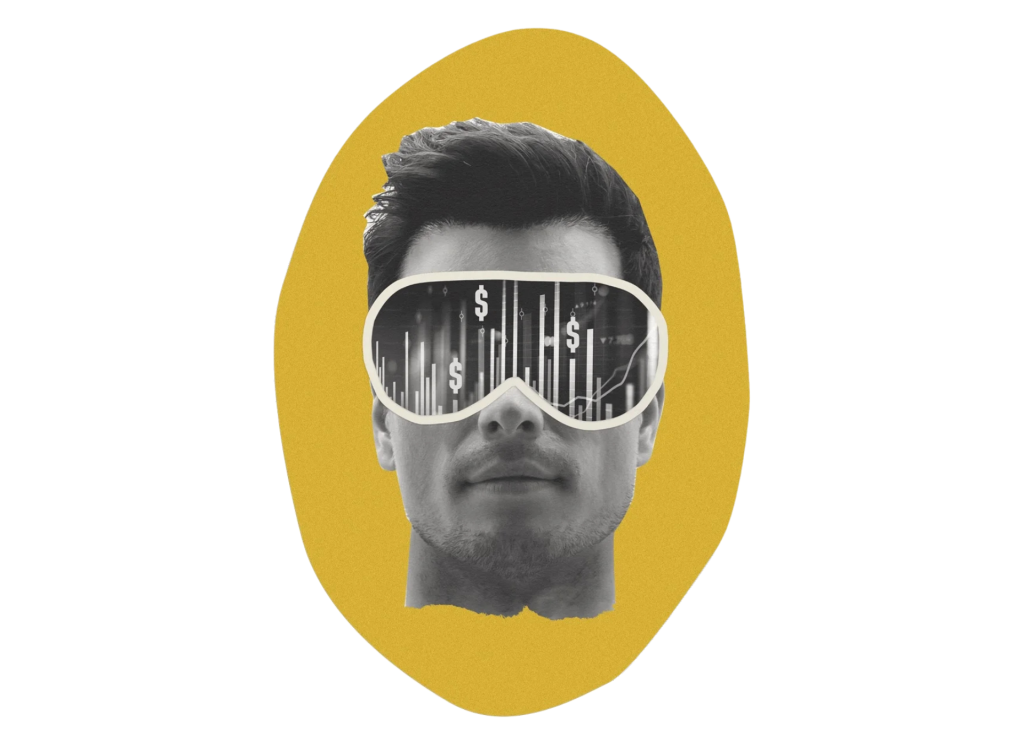
What was once fringe has now become a cultural necessity for those who can afford anything, with science finally catching up to ambition. Sinclair’s lab at Harvard recently published a study on the reversibility of cellular ageing—restoring vision in blind mice and setting the stage for human trials in conditions like glaucoma. In Boston, his company Life Biosciences will begin treating patients with blindness in a Phase I trial using partial cellular reprogramming early next year. “This isn’t science fiction anymore,” Sinclair says. “We’re at the point where we can reprogram cells, turn back their biological clocks, and restore function.”
Meanwhile, practitioners like Dr. Adam Brown of the Longevity Institute in the Sydney suburb of Double Bay are reinventing diagnostics. His “assessment menu” has been compared—only half-jokingly—to a Michelin Guide for medical testing: full-body MRI scans, continuous glucose monitors, polygenic risk scores. “What we do is proactive, not reactive,” he says. “Correct deficiencies first, then optimise health. That’s how you get peak performance in the short term and resilience in the long term.” Brown frames longevity in terms that would resonate with any investor: “There’s a short-term ROI—fixing glucose or sleep issues so you perform better tomorrow. And there’s a long-term ROI—functioning in your 70s as you would in your 40s. That’s extending your career, your income potential and your independence.”
“Once upon a time, male vanity meant injectables, veneers and a tan. Today, it’s VO2 max scores and continuous glucose monitor readouts.”
Peter Attia, the Canadian-American physician and podcast host who has helped popularise the concept of “Medicine 3.0”, echoes this emphasis. Medicine 1.0, according to him, was about surviving infections. Medicine 2.0 was about treating chronic disease. Medicine 3.0 is about staying ahead of decline: measuring, monitoring and intervening early. “The goal is not just to avoid disease but to lengthen health span,” Attia has said.
For those already converted, longevity is less about lab science than daily rituals. Sydney-based Chief Brabon, who trains CEOs like athletes, says: “These men are like Formula One cars—you don’t wait until the tyres are bald before swapping them. You keep everything tuned, precise, optimised.”
That tuning now involves more gadgets than ever: hyperbaric oxygen chambers, cryotherapy, sauna/cold-plunge circuits, peptide stacks, nootropics. And yes, a glut of supplements, some with evidence, others little more than wishful thinking. Once upon a time, male vanity meant injectables, veneers and a tan. Today, it’s VO2 max scores and continuous glucose monitor readouts. “Health is the new flex,” as Steve Grace quipped, glancing at his wrist-worn biometric tracker.
The New Flex: Health as the Ultimate Luxury
Still, there is plenty of scepticism. Some therapies are unproven, others prohibitively expensive. And there is the unavoidable fact that many leading scientists, including Sinclair, have stakes in companies producing supplements and therapeutics, raising eyebrows about conflicts of interest. “The difference,” Sinclair insists, “is whether it’s backed by peer-reviewed science and measurable biomarkers. If it can’t be quantified, it’s marketing, not medicine.”
Then there are the contradictions. It promises democratisation while often priced like a private club. It champions science but thrives on hype. It seeks to extend health span but risks deepening class divides. “Only if we let it,” Sinclair says when asked if longevity risks becoming the preserve of the wealthy. “Like antibiotics or aspirin, these advances should become widely available and affordable once they scale.” Sali agrees, but from another angle: “Biohacking doesn’t have to be expensive,” he says. “The blue zones prove that—community, diet, movement, purpose. Those are free. Wellspring is about making that knowledge accessible.”
And yet, for all its shortcomings, the movement is here to stay. Investment continues to pour in. Technology—like senolytic drugs that clear aged cells or AI-driven platforms that predict individual disease risk years in advance—is moving from speculation to clinical trial. Scientists are being recast as influencers. And the wealthy, always in search of the next advantage, have found in longevity a pursuit as old as alchemy, yet dressed in the language of venture capital. The truth is that health has always been an asset. What’s new is that it’s now being traded, optimised and measured like one.
In the end, longevity is less about a moonshot than about curiosity. Banks, Sali, Sinclair, Attia are all, in their own way, betting on time. Perhaps the most radical idea is also the simplest: that the best-performing asset in any portfolio is the body itself. Unlike Bitcoin, it carries you to meetings. Unlike art, it cannot be stored in a vault. Unlike real estate, it is non-transferable.
The new calculus of longevity is the recognition that the ultimate luxury is not wealth or status, but a few more decades of clear thought, strong bones and good company—and the ability to make money off it. Everything else, as one investor put it, is just a rounding error.
You may also like.
How Sailing Shaped Loro Piana’s Most Iconic Designs
Pier Luigi Loro Piana grew his family textile business into a celebrated fashion house by following his passion for sports on land and at sea.
The Regatta Connection
The race village at Port de Saint-Tropez is awash with people in nautical navy and white, the de facto dress code for the Loro Piana Giraglia regatta. This is the second year the fashion house has lent its name to one of the Mediterranean’s most prestigious summer races. The course zooms from the French coast to Genoa, Italy, taking a sharp turn past Giraglia, a small island off Corsica’s northern tip. It’s the latest in a long line of marine events the brand has sponsored, dating back more than 20 years.
The link between sailing and the brand—and more consequentially the Loro Piana family—is exemplified by the man Robb Report is here to meet: Pier Luigi Loro Piana. An avuncular figure in his 70s with the physique of a man who has enjoyed life, Pier Luigi fell in love with sailing in his late teens, when a family friend took him for a cruise in a sloop.
“Using the wind to go faster or slower, driving the boat like it has an engine, it’s really fascinating,” he says. Inevitably, he started competing. “When you’re sailing, you’re always looking for other boats to go and fight with. It’s an instinct,” he says. And then, with considerable understatement, “I think it’s a nice hobby.”
A Life Under Sail
He currently owns two boats: My Song, which you can see on these pages, is a 25 m sailing yacht that competed in the Regatta. There’s also Masquenada, a comfortable 50 m explorer. It’s a commendable set-up befitting a man who shaped one of Europe’s most celebrated fashion houses.
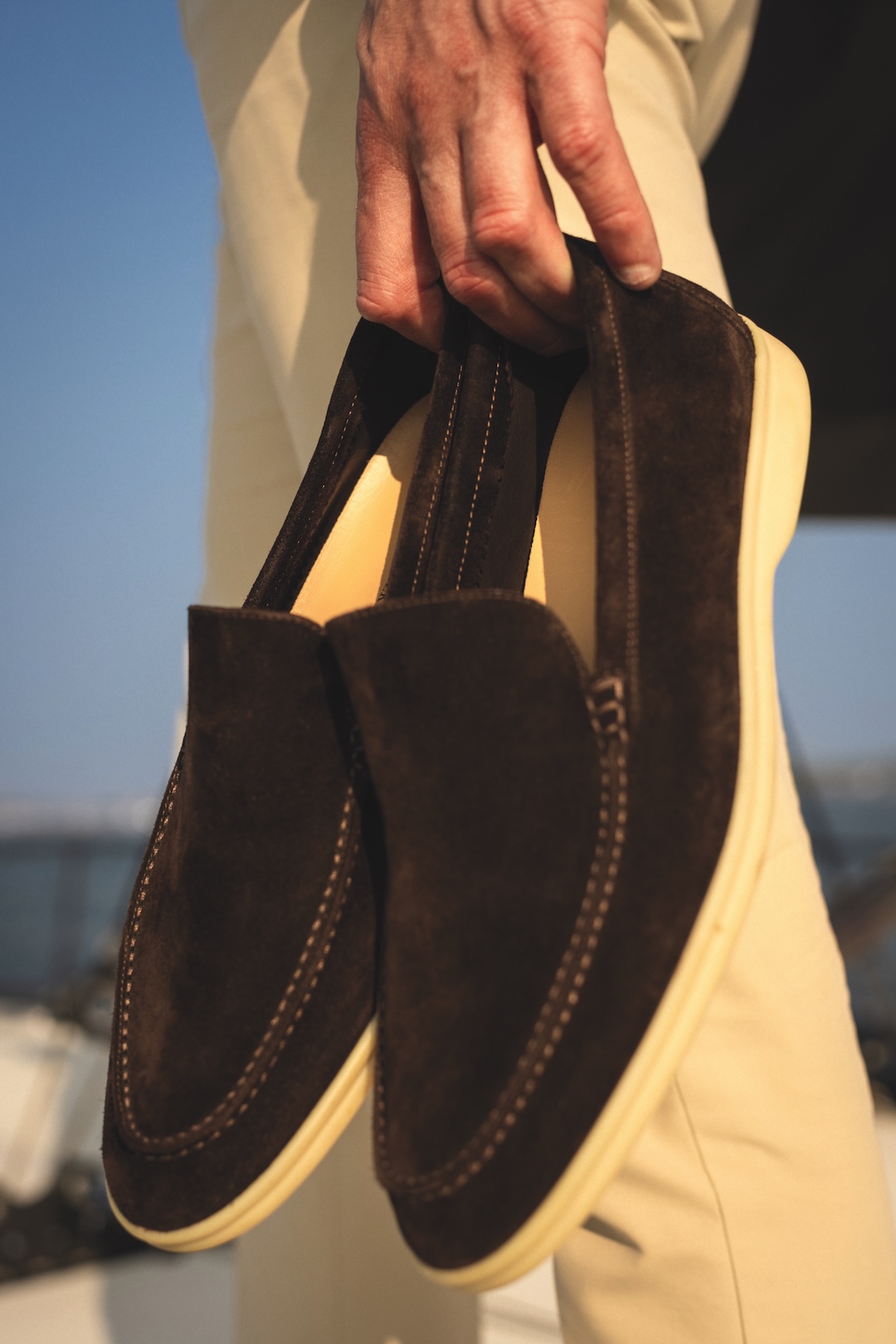
A Family Business Turned Global Powerhouse
The textile and clothing company that bears his family’s name was launched by an ancestor, Pietro Loro Piana, in 1924. A few generations later, Pier Luigi and his brother, Sergio, would run it for four decades until LVMH acquired a majority stake for around $4 billion in 2013. Sergio passed away that year; his widow and Pier Luigi still own a share of the brand between them.
The brothers proved innovative custodians, moving the company upmarket with an insistence on ultra-fine materials and groundbreaking fabrications. And the connection with sports—specifically yachting, horseback riding, skiing and golf—is integral to how the brand positions itself. As Pier Luigi recalls, such associations often had self-serving origins.
“These are the sports my brother and myself were doing,” he says. “We were very committed in business in the 1970s, ’80s, ’90s, so we were like our customers: people that like to work hard but also play hard. And that meant sports.”
Innovation Born of Necessity
This affinity often led them to develop durable, yet elegant, materials and gear for their off-duty pursuits, eventually offering versions to their athletic clientele. “We engineered products with unusual properties, natural fibres like wool or cashmere with a membrane that makes it waterproof and windproof… For research and development, I was the first victim,” he says with a chuckle. Once, he wanted a ski jacket that was “warmer, lighter, softer and better” than nylon models, so he made a prototype to test on the slopes. It gave birth to the Loro Piana Storm System, launched in 1994. The line’s wind-resistant waterproof wool and cashmere has since been used by brands around the world. “I still have this jacket,” he says.
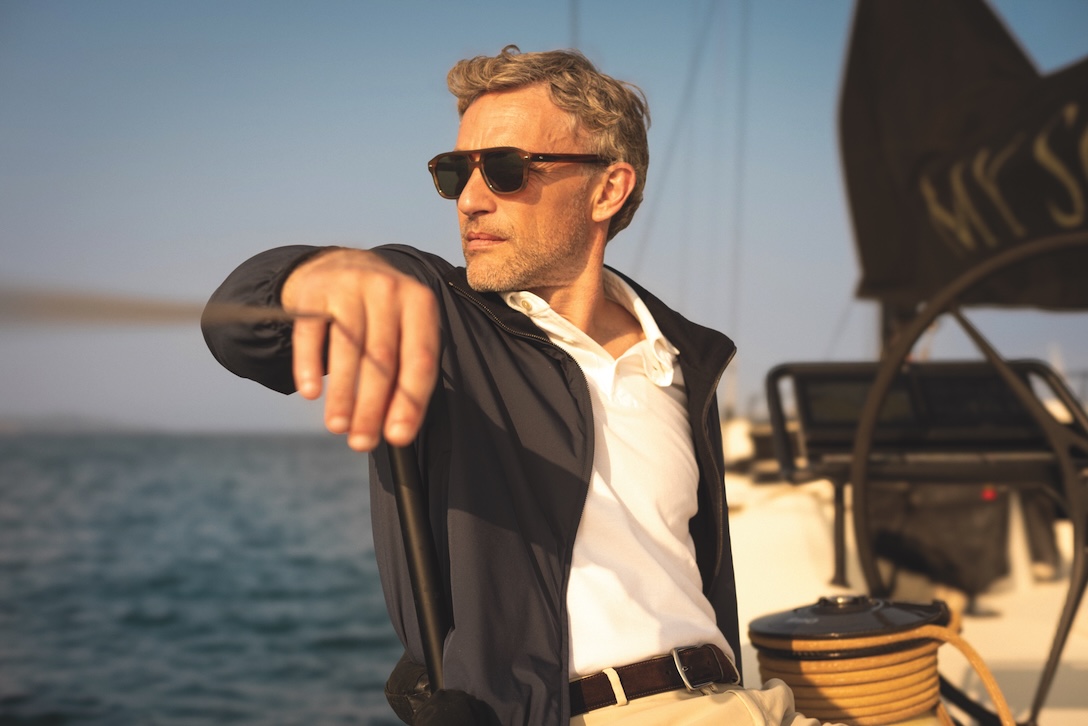
The same process happened on the water. A beloved reversible bomber, with knitted cashmere on one side and waterproof polyester on the other, was born from Pier Luigi’s need for a functional jacket to wear on his yacht. “It’s very light, doesn’t wrinkle, it’s warm, windproof,” he says. “It solves so many problems.”
He takes less credit for perhaps the brand’s most famous—and almost certainly most imitated—product, the white-soled suede Summer Walk loafers. “That was my brother,” he says. “When we were 20, 30 years old, we went sailing and there were only [Sperry] Top-Siders or Sebagos. But when the soles got worn, they got hard and slippery.”
The answer: a non-marking sole with grip—“like a tire you use in Formula 1 when it’s wet”—which Sergio got his bespoke shoemaker to sew to suede uppers. Eventually, they produced two versions: a loafer and the Open Walk, a model with a slightly higher top. “We discovered people were using them also for formal wear because they were so comfortable,” says Pier Luigi. “It’s really a successful story that started from product research.”
And if problem-solving can turn your family business into a giant of global style, clearly it pays to be a little selfish.
You may also like.
The Supercar of Pool Tables
In a rare fusion of Italian design pedigree and artisanal craftsmanship, Pininfarina and Brandt have reframed the barroom game as aerodynamic high art.
In the rarefied realm where leisure meets design, the latest object of desire doesn’t purr down the autostrada—it commands the room from a single sculptural base. The Vici pool table, a collaboration between Italian automotive legend Pininfarina and Miami’s bespoke table-maker Brandt Design Studio, reimagines the game with the same aerodynamic poise and artisanal precision that have graced some of the world’s most beautiful vehicles.
Named for Julius Caesar’s immortal boast—“Veni, vidi, vici”—this limited-edition series transforms billiards from casual diversion into a declaration of style. Every curve is deliberate, from the ultra-thin playing surface clad in tournament-grade Simonis cloth to the seamless integration of Italian nubuck leather and precision-milled metals. The effect is more haute sculpture than barroom pastime—yet it meets exacting professional standards.
For the true connoisseur, the debut PF 95 Anniversario edition celebrates Pininfarina’s 95-year legacy in just 95 numbered pieces. Finished in dark-blue lacquer with rose-gold accents and a flash of red felt, each table is discreetly nameplated—a tangible claim to an heirloom in the making.
“It’s not just about how it plays—it’s about how it lives in a space,” says Dan Brandt, the master craftsman whose work has long graced the world’s most exclusive interiors. Whether anchoring a penthouse salon, a members’ lounge or the main deck of a superyacht, the Vici is designed to stir conversation before the first break.
For those accustomed to Pininfarina’s sleek automotive silhouettes, this is a chance to bring that same lineage of movement, form and Italian refinement into the home. Only now, the horsepower is measured not in engines—but in the geometry of a perfect shot.
From pool to midcentury to Ottoman, we’ve got all the table angles covered at Robb Report Australia & New Zealand —plus more home-worthy pieces.






